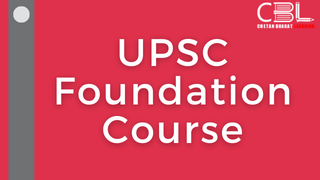Important for
Prelims: International Relations
Mains: General Studies II
Context
- The Saudi-Iran detente/truce is China’s major geopolitical manoeuvre in West Asia and sets the stage for political influence in the region that was formerly dominated by the US.
Background
- The opening of diplomatic relations between the two came after decades of enmity and a formal cutting of ties in 2016.
- Since 2014, the two countries had been in a proxy war in Yemen, where Iran is backing the Houthi rebels and the Saudis lead a coalition of Gulf states backed by the US.
About the Saudi Iran deal brokered by China
- The “joint trilateral statement”, signed in Beijing, includes –
- Resumption of diplomatic relations and reopening of embassies and missions;
- To respect for the sovereignty of states and the non-interference in the internal affairs of states;
- To implement the Security Cooperation Agreement (2001) and
- To implement the General Agreement for Cooperation in Economy, Trade, Investment, Technology, Science, Culture, Sports, and Youth (1998).
Mutual interests drive settlement decisions
- Exploring Reasons Behind Agreement
- For Saudi, tense relations with the Biden Administration, the absence of American security guarantees against Iran, rapid changes in the Saudi economy (diversification) and China’s rising profile in West Asia.
- For Iran, the isolation that came with the nuclear sanctions; the Abrahamic accords (2020) – the coming together of archenemy Israel-UAE-Bahrain-Saudi; the uprising of women; normalized relations with UAE and Kuwait.
Significance of the deal:
- No one believes this deal will end all differences between the Sunni (Saudi) monarchy and Shia (Iran) republic.
- The deal may lead to lasting peace in Yemen and also end proxy Saudi-Iran hostilities in Lebanon, Syria, etc.
- May develop into a four-way alignment (Saudi-Iran-China-Russia).
- China is taking a new avatar – peacemaker, power broker – giving the world a new alternative to the US (blamed for instability in the region – failed miserably in Iraq, and Afghanistan).
World’s Response
- US: Welcomed the agreement and declined the assessment of diminished US influence in the region.
- For example, Saudi recently concluded a deal for 121 Boeing aircraft with the US.
- Israel: A clear setback for PM Binyamin Netanyahu’s foreign policy – claiming to be the only country that could bring together an Arab-Israeli coalition against Iran.
- The Abrahamic Accords/the Arab-Israeli alliance, mediated by the Trump Administration, are shaken up by the Saudi-Iran agreement.
India:
- Shocked by China’s (its principal adversary in a region where it has invested much diplomatic energy over the last decade) new avatar.
- India has always advocated dialogue and diplomacy to resolve differences.
Options available for India
- Cooperation rather than confrontation with China in West Asia.
- Considering both countries have a wide range of shared interests in terms of energy security, open and free sea lanes, logistical connectivity, and most importantly, regional stability.
Conclusion:
- China’s big-ticket diplomacy in the region is sure to impact the I2U2 (Israel-India-UAE-US) grouping.
- It calls for India to work on its ties to the region independently of the US (for instance with Iran), and in ways that project its civilizational and cultural links and the positive contributions of the Indian diaspora.
Mains Practice Question




Leave a Reply
You must be logged in to post a comment.